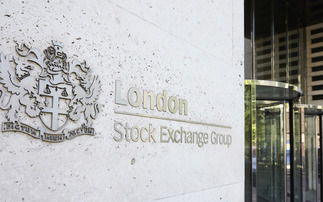INDUSTRY VOICE: 2018 has been a popular year for US equity, with almost €18bn collected in US ETFs. And even at this late stage of the economic cycle, we at Lyxor still see opportunities. Keep reading to find out how the economic cycle might inform your American equity choices
>> Find the lowest cost US equity fund: TER of 0.04%
This tool can explore US equity indices and help you choose the right fund.
Why there US could go further
There's little doubt Trump's belated, but unprecedented, fiscal stimulus should foster more inflation at a time the economy is running at or above full capacity. Strong top-line revenues and margin expansion (as well as share buybacks) have bolstered the earnings-per-share outlook for corporates, while recovering capex and the associated upturn in productivity could help mitigate the negative effects of rising wages. All of which suggests there's some further upside ahead. Little wonder investors are still being drawn to the US, despite the unpredictability of the administration on the Hill and the looming mid-terms.
That said, we do expect more volatility in the coming weeks, given the policy and political pipeline. We're expecting another rate hike later this month, after which all eyes will turn to the mid-term elections. Further trade tensions lurk.
>>More about reducing volatility in your equity portfolio
Recent US ISM surveys have reached new cycle highs and the job market has remained strong, suggesting solid growth in the coming months. Outside the US, business survey results such as PMI manufacturing in emerging countries and Europe have dipped on the trade tensions, but they're still pointing to economic expansion. That could change should the trade war escalate or become more global in nature but we still think a negotiated settlement is ultimately more likely. In truth, a move from sporadic, temporary sell-offs into a lasting bear market requires a more meaningful, cyclical turn down - something we don't foresee just yet.
You are here
Although every business cycle is different, they do tend to follow a similar pattern. Convention has it that when an economic recovery matures, the energy and materials sectors - which are closely tied to raw material prices - tend to do well. That's because inflationary pressures are building and demand for these goods is still solid. On the other hand, IT and consumer discretionary stocks tend to suffer because their profit margins are being eroded and investors are becoming more wary of luxury spending.
We're seeing some of this today in the US with the recovery now entering its dotage, but there are specific issues helping some sectors defy convention.
Of size, sectors and styles
When assessing US equity allocations today, you have to factor in the fallout from the fiscal push. It helped US corporates avoid typical late-cycle like slowing earnings growth and a squeeze on profit margins and also ensured a favourable environment for Financials and Technology, through deregulation and tax reform respectively.
Meanwhile, Trump's tax cuts should still stimulate additional profit growth for smaller companies, many of which benefit from a domestic bias to their business - making them slightly less vulnerable to the ongoing trade disputes.
Style-wise, we still favour growth given the importance of robust earnings growth and sustainable profit margins right now. Those tax reforms should continue to boost capex, cash repatriation and, ultimately, tech - a sector which currently represents around 30% of all US capex and around 40% of the Russell 1000 Growth Index.
Capturing opportunity with Lyxor
If you agree the US is a land of opportunity, look no further. Lyxor's US equity range opens up 14 possible routes to travel, across mainstream and more specific indices from just 0.04%. And because we've been managing ETFs in the region for over 16 years, and run over €8bn in assets, we may just be the guide you need.
Find out more about Lyxor's full range of North American ETFs
THIS COMMUNICATION IS FOR ELIGIBLE COUNTERPARTIES OR PROFESSIONAL CLIENTS ONLY
* Sources: Lyxor International Asset Management. Economic data as at end August 2018. TERs correct as at 11/09/2018, ETF flows data from Bloomberg, correct 14/09/2018
This document is for the exclusive use of investors acting on their own account and categorized either as "Eligible Counterparties" or "Professional Clients" within the meaning of Markets in Financial Instruments Directive 2004/39/EC. These products comply with the UCITS Directive (2009/65/EC). Société Générale and Lyxor International Asset Management (LIAM) recommend that investors read carefully the "investment risks" section of the product's documentation (prospectus and KIID). The prospectus and KIID are available free of charge on www.lyxoretf.com, and upon request to [email protected].
The products mentioned are the object of market-making contracts, the purpose of which is to ensure the liquidity of the products on the London Stock Exchange, assuming normal market conditions and normally functioning computer systems. Units of a specific UCITS ETF managed by an asset manager and purchased on the secondary market cannot usually be sold directly back to the asset manager itself. Investors must buy and sell units on a secondary market with the assistance of an intermediary (e.g. a stockbroker) and may incur fees for doing so. In addition, investors may pay more than the current net asset value when buying units and may receive less than the current net asset value when selling them. Updated composition of the product's investment portfolio is available on www.lyxoretf.com. In addition, the indicative net asset value is published on the Reuters and Bloomberg pages of the product, and might also be mentioned on the websites of the stock exchanges where the product is listed.
Prior to investing in the product, investors should seek independent financial, tax, accounting and legal advice. It is each investor's responsibility to ascertain that it is authorised to subscribe, or invest into this product. This document is of a commercial nature and not of a regulatory nature. This material is of a commercial nature and not a regulatory nature. This document does not constitute an offer, or an invitation to make an offer, from Société Générale, Lyxor Asset Management (together with its affiliates, Lyxor AM) or any of their respective subsidiaries to purchase or sell the product referred to herein.
Lyxor International Asset Management (LIAM), société par actions simplifiée having its registered office at Tours Société Générale, 17 cours Valmy, 92800 Puteaux (France), 418 862 215 RCS Nanterre, is authorized and regulated by the Autorité des Marchés Financiers (AMF) under the UCITS Directive (2009/65/EU) and the AIFM Directive (2011/31/EU). LIAM is represented in the UK by Lyxor Asset Management UK LLP, which is authorized and regulated by the Financial Conduct Authority in the UK under Registration Number 435658. Société Générale is a French credit institution (bank) authorised by the Autorité de contrôle prudentiel et de résolution (the French Prudential Control Authority).
Lyxor International Asset Management ("LIAM") or its employees may have or maintain business relationships with companies covered in its research reports. As a result, investors should be aware that LIAM and its employees may have a conflict of interest that could affect the objectivity of this report. Investors should consider this report as only a single factor in making their investment decision. Please see appendix at the end of this report for the analyst(s) certification(s), important disclosures and disclaimers. Alternatively, visit our global research disclosure website www.lyxoretf.com/compliance.
CONFLICTS OF INTEREST This research contains the views, opinions and recommendations of Lyxor International Asset Management ("LIAM") Cross Asset and ETF research analysts and/or strategists. To the extent that this research contains trade ideas based on macro views of economic market conditions or relative value, it may differ from the fundamental Cross Asset and ETF Research opinions and recommendations contained in Cross Asset and ETF Research sector or company research reports and from the views and opinions of other departments of LIAM and its affiliates. Lyxor Cross Asset and ETF research analysts and/or strategists routinely consult with LIAM sales and portfolio management personnel regarding market information including, but not limited to, pricing, spread levels and trading activity of ETFs tracking equity, fixed income and commodity indices. Trading desks may trade, or have traded, as principal on the basis of the research analyst(s) views and reports. Lyxor has mandatory research policies and procedures that are reasonably designed to (i) ensure that purported facts in research reports are based on reliable information and (ii) to prevent improper selective or tiered dissemination of research reports. In addition, research analysts receive compensation based, in part, on the quality and accuracy of their analysis, client feedback, competitive factors and LIAM's total revenues including revenues from management fees and investment advisory fees and distribution fees.













